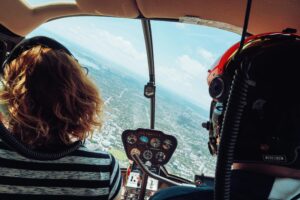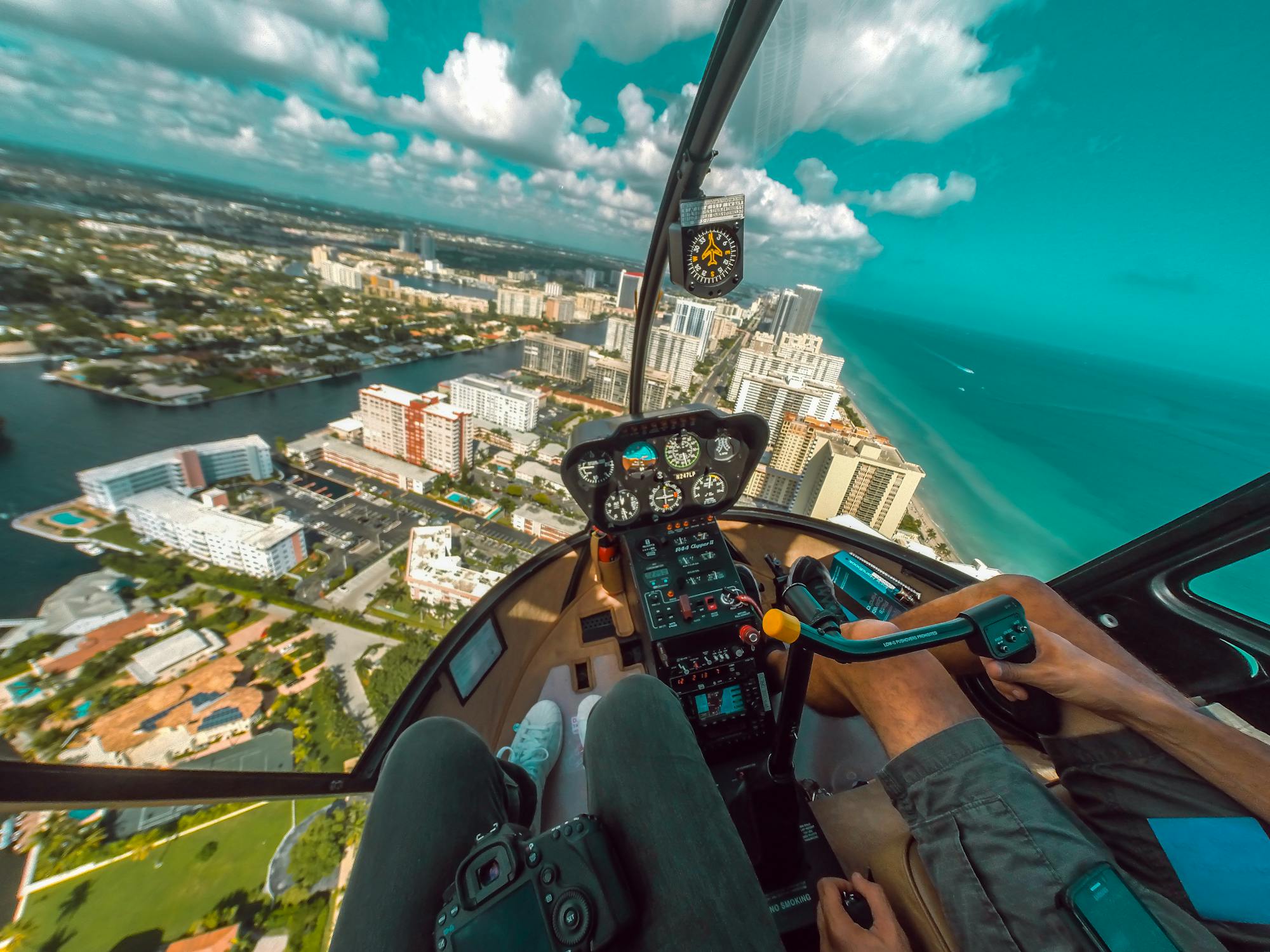A High-Flying Adventure with Safety in Focus
Helicopter sightseeing tours are one of the most exhilarating ways to experience the best of America—from soaring above the Grand Canyon’s crimson cliffs to gliding past the Statue of Liberty. The views are unforgettable, the adrenaline undeniable. But some travelers wonder: Is it safe?
The short answer is: yes—when operated by certified, responsible companies, helicopter tours in the U.S. are very safe. These tours are regulated, refined, and performed by highly trained professionals who make safety their top priority.
Let’s dive into the facts, understand real-world safety standards, learn from past incidents, and explore why millions of people each year enjoy helicopter tours safely and joyfully across the world.
Helicopter Safety by the Numbers
According to the Federal Aviation Administration (FAA) and the National Transportation Safety Board (NTSB):
- In 2023, there were 94 civil helicopter accidents in the U.S.—only 19 of which were fatal.
- Tour helicopters are a small subset of those flights, and the vast majority are conducted without incident.
- The fatal accident rate for helicopters overall is about 0.65 per 100,000 flight hours—comparable to activities like hiking or scuba diving.
✅ Millions of helicopter sightseeing flights happen every year in the U.S. without incident. In fact, locations like Hawaii, Las Vegas, and NYC have some of the most experienced pilots in the world, flying the same routes hundreds of times with great precision.

Why Helicopter Tours Are Safer Than You Think
While helicopters have more moving parts than airplanes, they also have unique safety advantages:
🚁 1. Hovering & Vertical Landing Capability
Unlike planes, helicopters can hover in place and land without a runway—meaning they can avoid many crash scenarios by landing on roads, rooftops, or open terrain if needed.
👨✈️ 2. Exceptionally Trained Pilots
Tour pilots are required to have commercial helicopter licenses, undergo regular training and flight checks, and are often former military or medical pilots with years of experience.
🧠 3. Predictable Routes & Conditions
Tour helicopters typically fly short, familiar routes in controlled airspace. Companies monitor weather, wind, and traffic patterns, and flights are cancelled or delayed if anything looks unsafe.
Real-Life Tours: Thousands Fly Safely Every Day
🌄 Grand Canyon
Thousands of tourists take helicopter rides over the Grand Canyon every year with companies like Papillon and Maverick Helicopters. These companies operate state-of-the-art aircraft, fly experienced routes, and have maintained solid safety records for years.
🌺 Hawaii
In places like Kauai and Maui, helicopters offer the only view of remote waterfalls, cliffs, and volcanoes. Companies such as Blue Hawaiian Helicopters and Safari Helicopters follow strict weather protocols, and Hawaii’s Helicopter Safety Team actively works to improve safety standards island-wide.
🗽 New York City
Flying over Manhattan in a helicopter is a bucket-list experience. NYC tour operators like HeliNY and FlyNYON are FAA Part 135 certified, meaning they follow the same safety regulations as small commercial airlines.
Yes, Accidents Have Happened—But Safety Got Stronger
While rare, accidents have occurred. These incidents are studied in depth, and they almost always lead to new regulations, aircraft upgrades, and better safety awareness.
🔥 Case: 2018 Grand Canyon Crash
- Outcome: Reinforced the need for crash-resistant fuel tanks, now widely adopted.
- Industry Response: Many operators upgraded their aircraft voluntarily.
🌊 Case: 2018 NYC East River Crash (doors-off flight)
- Outcome: FAA banned unsafe harness systems and doors-off tours with poor emergency release mechanisms.
- Impact: Doors-off flights are now far safer or completely redesigned.
These events are exceptions, not the norm—and they’ve made the industry stronger and safer. Every incident leads to better practices, making today’s tours the safest they’ve ever been.
Modern Technology & Safety Upgrades
Today’s helicopters used for sightseeing come equipped with:
- ✅ Crash-resistant fuel systems (CRFS)
- ✅ Advanced GPS navigation
- ✅ Weather radar and real-time condition monitoring
- ✅ Helicopter Terrain Awareness and Warning Systems (HTAWS)
- ✅ High-visibility windows and stabilized camera systems
Reputable companies follow FAA maintenance schedules, often going above and beyond with in-house inspections and third-party audits.
How You Can Choose a Safe Helicopter Tour
You play a role in your safety too! Here’s what smart travelers do:
✅ 1. Choose a Certified Operator
Look for FAA Part 135 certification (a gold standard for charter and tour operators). It means they follow strict safety, maintenance, and pilot training requirements.
✅ 2. Ask About the Aircraft
Prefer newer aircraft models like the Airbus H130 or Bell 407. Ask if they have crash-resistant fuel systems and other modern safety upgrades.
✅ 3. Know the Weather Policy
A good operator will cancel or delay flights in poor weather. If they insist on flying when it looks unsafe—walk away.
✅ 4. Read Reviews & Reputation
TripAdvisor, Google, and Yelp can reveal a lot. Look for operators with consistent 4.5–5 star ratings and positive mentions about safety and professionalism.
What Customers Say
💬 “The pilot explained everything, from safety to scenery. I never felt scared, just in awe.” – Visitor to Kauai, Hawaii
💬 “We flew over the Las Vegas Strip at sunset—it was smooth, stunning, and so well-run. I’d do it again in a heartbeat.” – Tourist in Nevada
Pros of Helicopter Sightseeing
🌟 Unmatched Views: See landscapes from a perspective you simply can’t from the ground.
🌟 Photo Opportunities: Perfect for special occasions, proposals, or bucket-list memories.
🌟 Efficient Sightseeing: Cover miles of terrain in just 20–30 minutes.
🌟 Eco-Tourism Ready: Many operators use quieter, fuel-efficient helicopters to reduce impact.
Final Thoughts: A Safe Adventure Worth Taking
Helicopter tours aren’t just thrilling—they’re also remarkably safe when operated by the right professionals. From NYC to Maui, millions of people take scenic flights every year without a hitch. And today’s aircraft are better equipped, more tightly regulated, and flown by highly skilled pilots with your safety at the center of everything.
Of course, like all adventures—paragliding, hiking, diving—there’s a calculated risk. But with smart choices and a trusted operator, the odds are overwhelmingly in your favor for a spectacular and safe flight.
So if you’ve ever dreamed of seeing the Manhattan skyline from the air, the Grand Canyon in golden light, or Hawaiian volcanoes from above, don’t let fear hold you back. With safety taken seriously at every level, a helicopter tour in America can be one of the most extraordinary experiences of your life.
